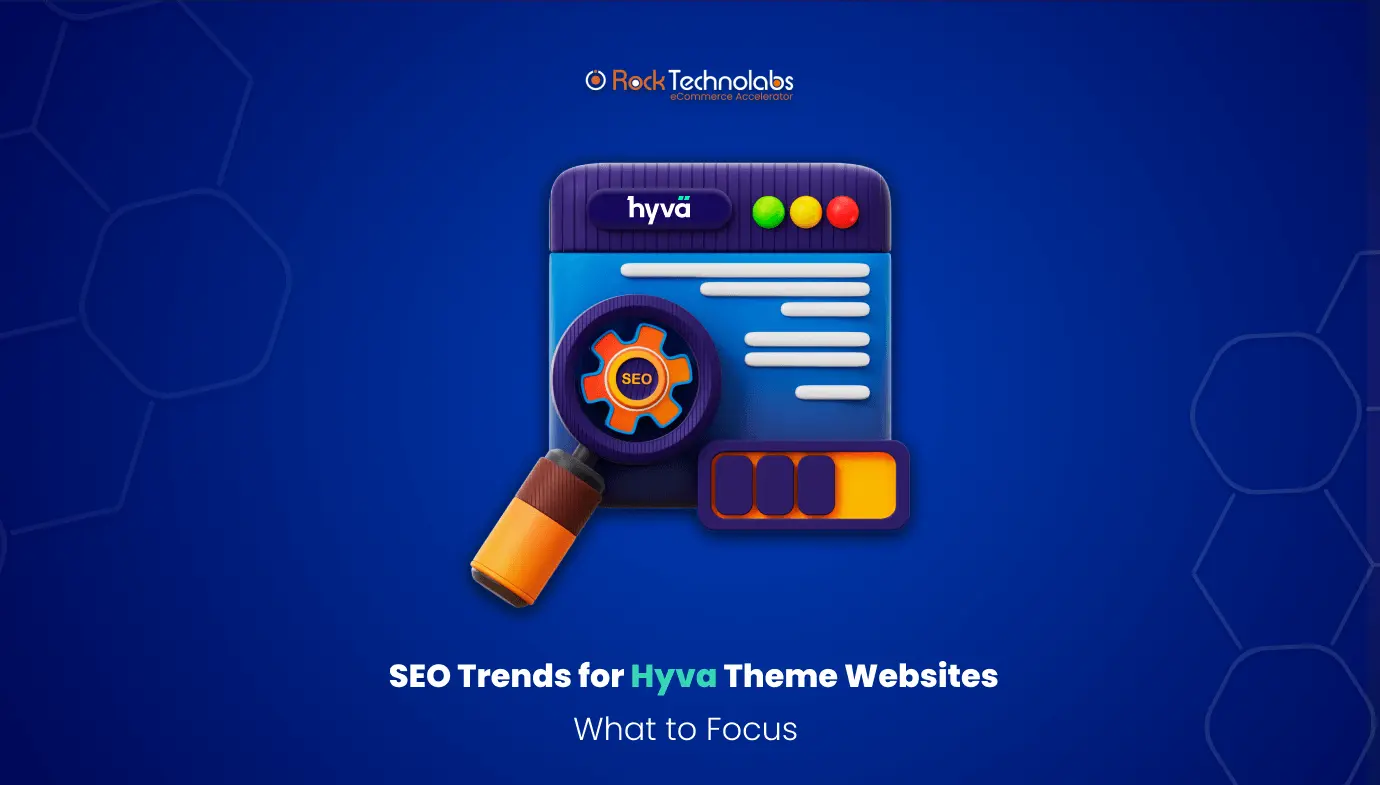SEO Trends for Hyva Theme Websites: What to Focus

If you are a Magento owner, you very well know that selling products online through a Magento website means facing stiff competition from other sellers targeting the same customers. To succeed, you need to offer the best products at competitive prices. However, providing top-notch products at reasonable prices isn’t enough.
Success largely hinges on how well your Magento website is optimized, and created with the user-centric approach, and in this hyva theme plays a big role. Because search engines prefer websites that offer a superior user experience, and Hyvä’s performance optimizations help achieve this goal.
Furthermore, Hyvä themes support the use of structured data, which can enhance your site’s search result appearance with rich snippets. These improvements can boost click-through rates (CTR) by making your search result entries more detailed and attractive. Thus, these features of the Hyva theme influence Magento merchants to go for Hyva theme development services instead of opting for the old default theme.
By utilizing Hyvä’s SEO features, you can increase organic traffic to your site and gain a competitive advantage in search engine rankings.
Today’s article will cover some of the best Magento 2 hyva theme SEO practices, including technical aspects related to Magento’s backend SEO.
1. Avoid Duplicate Content
Duplicate content, as the name suggests, refers to the repetition of similar content across multiple pages within a website or across different websites. This can create issues for search engine robots. When Google crawls your site, it can detect identical content.
Duplicate content is highly detrimental to SEO for two primary reasons:
- Search engine robots get confused when deciding which version of the content to index and display in search results.
- It complicates the process for search engines to consolidate link metrics for the content.
SEO performance and rankings for all instances of duplicate content can be significantly impacted, particularly if other sites link to more than one version of the content.
To effectively manage duplicate content, use canonical tags and the Robots.txt file. The Robots.txt file allows you to prevent search engine bots from crawling certain pages on your eCommerce site.
2. Enhance Meta Tags for Product Detail Pages
The initial focus during any eCommerce site review is often the improper use of meta tags. Generally, there are two crucial aspects to consider for SEO meta tags in Magento 2 hyva theme websites:
Title Tags: This is the clickable link of your page displayed in SERPs. It should be approximately 50-60 characters long and provide an accurate description of the page’s content.
Description Tags: Limited to 160 characters (including spaces), this is a brief introduction to the page’s content. Its purpose is to capture attention and drive more organic traffic.
Here are some best practices for SEO meta tags:
Ensure the meta description is specific and relevant, avoiding generic or clickbait content. It should align with the search intent of consumers, include target keywords, and provide an accurate summary of the page’s content.
For title tags, steer clear of being generic or vague. They should be clear, descriptive, and directly match the search intent of potential visitors.
3. Craft Unique Product Descriptions
One often overlooked factor that can enhance SERP rankings for online merchants is product descriptions. With hundreds or even thousands of items in the same categories, creating unique descriptions for each product can be a daunting task for sellers.
Consequently, many eCommerce businesses resort to using the same content for multiple items with similar features or simply copying the manufacturer’s descriptions, particularly in dropshipping scenarios.
Search engines view this as duplicate content. Not only can this lower your website’s ranking, but it may also prevent Google from indexing your site at all. So it would be better if all your products will be listed on your Magento 2 hyva theme website with different and appealing description, and that give complete details of your product.
4. Fast Website Loading Speed
Bounce rates rise by 32% when page load times increase from one to three seconds. Therefore, site load times play a crucial role in SERP rankings. Magento 2 hyva theme architecture is built to manage stores with high traffic volumes, and it provides several SEO extensions to boost site speed as well.
These optimizations include using flat catalogs to reduce SQL queries to cached storage and merging JavaScript and CSS files, which are common causes of slow web pages. Many of these features are accessible through Magento’s configuration settings.
5. Optimize Your Product Images
Optimizing product images is an effective Hyva theme development SEO strategy. There are two key aspects to focus on regarding product pictures. First, replace the default file names with descriptive names that accurately reflect the image content. This helps search engines access, understand, and recommend your products on SERPs.
Additionally, optimize the alt text for your images. Alt text (or alt attribute, alt description) describes the appearance and function of an image on a page and is displayed to Google when it cannot scan the picture. To enhance your store’s SEO score, include keywords in your alt text. However, use keywords judiciously to avoid being flagged as spam by search engines.
6. Header Hierarchy
Headers such as H1, H2, and H3 tags structure your content and signal its importance to search engines. Here’s how to optimize them for your Magento store:
Best Practices:
– H1: Use a single H1 tag per page. It should succinctly describe the main topic.
– H2 & H3: Utilize subheadings (H2, H3, etc.) to divide content and highlight the focus of each section.
– Keyword Inclusion: Integrate your target keywords naturally into your headers without overloading them.
7. Customizing Headers in Magento
– Product/Category Pages: Headers are often derived from your product and category names. Editing these names will adjust your headers accordingly.
– Content Pages: Many Magento stores allow header editing within the content editor of individual pages.
– Theme-Level Styling: The design and appearance of headers are controlled by your theme’s CSS file. For advanced customization, consult a hyva theme development company or Magento 2 upgrade services.
8. Optimizing Category Pages
Category pages are essential for user navigation and for providing search engines with a comprehensive understanding of your inventory. Here’s how to optimize them effectively:
Filtering and Sorting Options: Implement filtering options (such as price, brand, color, etc.) to help customers find what they’re looking for easily.
Pagination for Large Categories: For extensive categories, use search engine-friendly pagination instead of infinite scrolling to divide the content into multiple pages.
Strategic Internal Linking: Include links to relevant products within your category descriptions and use “Featured Products” or “Related Products” sections. This enhances user navigation and improves site structure for search engines.
Keyword-Rich Content: Integrate relevant keywords naturally into your category descriptions. A brief, well-written paragraph is usually sufficient.
Avoid Thin Content: Enhance simple category pages with unique text, images, or featured product sections to provide value and differentiate them from other pages.
Wrapping Up
Including the above points, there are other ways as well that could help you in moving with SEO trends with the Hyva theme but those tactics fall a little bit on the complex side of SEO.
However, if you want your Magento 2 Hyva theme to be completely optimized as per the recent Google Algorithm or looking for Magento 2 upgrade services, Rock Technolabs expert Magento and Hyva theme developers are always available to help them – +91 99047 96885





